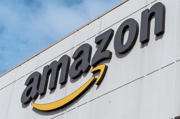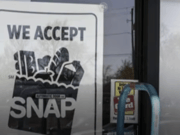Shoppers could get payouts from Amazon’s $2.5B settlement—are you one of them?
- Replies 0
Unexpected subscription charges can be frustrating, especially when they seem nearly impossible to cancel.
Millions of shoppers have dealt with surprise Prime renewals or long cancellation processes, but that could now turn into cash back.
Amazon has agreed to a massive $2.5 billion settlement with the Federal Trade Commission, with a large portion of the money set aside for refunds.
This decision follows claims that the company misled customers into unwanted memberships and made it difficult to stop them.
The FTC announced that Amazon would pay a record-breaking $1 billion civil penalty—the largest in US history—for allegedly enrolling millions of consumers in Prime subscriptions without their clear consent and making it unnecessarily difficult to cancel.
In addition, $1.5 billion will be distributed directly to affected customers as refunds, making this the second-largest restitution amount ever secured by the FTC.
The FTC’s investigation found that Amazon’s sign-up process for Prime was riddled with confusing language and misleading buttons.
For example, instead of a straightforward “No, I don’t want Prime” option, customers were often presented with a button that read, “No, I don’t want Free Shipping,” which could easily lead to accidental enrollment.
And if you’ve ever tried to cancel Prime, you know it’s not exactly a walk in the park—something the FTC says was by design.
If you’ve ever been surprised by a Prime charge or found yourself stuck in a seemingly endless cancellation loop, you could be among those eligible for a refund.
The FTC will be handling the distribution of the $1.5 billion in refunds.
While details on the exact process are still emerging, keep an eye on your email and official FTC announcements—scammers love to take advantage of situations like this, so be wary of unsolicited messages claiming to help you claim your refund.
Also read: Amazon Prime delivery is speeding up—here’s how it could change life in your town
While being on the topic, don’t forget that Prime does come with some genuinely useful perks—if you actually want them! Here are a few you might have missed:
Also read: Amazon warns Prime customers of rise in scam attempts: What to know and how to stay safe
This settlement isn’t just about Amazon. It’s part of a broader push by the FTC to protect consumers from tricky online subscription practices.
The Restore Online Shoppers’ Confidence Act (ROSCA), passed in 2010, requires companies to clearly disclose all terms before billing and to get your express consent.
Amazon’s case is a high-profile example, but the FTC is also working to make it easier to cancel subscriptions across the board.
Earlier this year, the FTC’s “Click-to-Cancel” rule—which would require all companies to make cancellation as easy as sign-up—was delayed in New York due to a legal challenge.
But the rule is expected to take effect nationwide on November 5, 2025, making it easier for all of us to escape unwanted subscriptions, whether it’s a streaming service, gym membership, or magazine.
Read next: Amazon is ending a longtime Prime perk—here’s what it means for you

Have you ever been surprised by a Prime charge? Did you find the cancellation process confusing or frustrating? Or maybe you’ve discovered a hidden Prime perk you can’t live without?
Millions of shoppers have dealt with surprise Prime renewals or long cancellation processes, but that could now turn into cash back.
Amazon has agreed to a massive $2.5 billion settlement with the Federal Trade Commission, with a large portion of the money set aside for refunds.
This decision follows claims that the company misled customers into unwanted memberships and made it difficult to stop them.
The FTC announced that Amazon would pay a record-breaking $1 billion civil penalty—the largest in US history—for allegedly enrolling millions of consumers in Prime subscriptions without their clear consent and making it unnecessarily difficult to cancel.
In addition, $1.5 billion will be distributed directly to affected customers as refunds, making this the second-largest restitution amount ever secured by the FTC.
The FTC’s investigation found that Amazon’s sign-up process for Prime was riddled with confusing language and misleading buttons.
For example, instead of a straightforward “No, I don’t want Prime” option, customers were often presented with a button that read, “No, I don’t want Free Shipping,” which could easily lead to accidental enrollment.
And if you’ve ever tried to cancel Prime, you know it’s not exactly a walk in the park—something the FTC says was by design.
Who’s Eligible for a Refund?
According to the FTC, an estimated 35 million people were impacted by these practices, either through unwanted Prime enrollments or by having their cancellation requests delayed or deferred.If you’ve ever been surprised by a Prime charge or found yourself stuck in a seemingly endless cancellation loop, you could be among those eligible for a refund.
The FTC will be handling the distribution of the $1.5 billion in refunds.
While details on the exact process are still emerging, keep an eye on your email and official FTC announcements—scammers love to take advantage of situations like this, so be wary of unsolicited messages claiming to help you claim your refund.
Also read: Amazon Prime delivery is speeding up—here’s how it could change life in your town
What’s Changing at Amazon?
As part of the settlement, Amazon is required to overhaul its Prime enrollment and cancellation processes. Here’s what you can expect moving forward:- Clear Decline Option: Amazon must provide a conspicuous, easy-to-find button for customers to decline Prime, replacing the confusing “No, I don’t want Free Shipping” option.
- Transparent Disclosures: All material terms of Prime—including membership costs, billing dates, renewal policies, and cancellation procedures—must be clearly disclosed before you sign up.
- Easy Cancellations: You’ll be able to cancel Prime using the same method you used to sign up. No more hunting through endless menus or jumping through hoops.
- Independent Oversight: Amazon will pay for a third-party supervisor to ensure ongoing compliance with these new rules.
While being on the topic, don’t forget that Prime does come with some genuinely useful perks—if you actually want them! Here are a few you might have missed:
- Prime Try Before You Buy: Try on clothes at home before you commit. Return what you don’t want within seven days, and only pay for what you keep.
- Amazon Photos: Unlimited full-resolution photo storage and 5 GB of video storage—perfect for organizing family memories.
- Amazon First Reads: Get early access to a new book every month, free.
- Prime Gaming: Free games, in-game content, and a free Twitch channel subscription each month.
- Membership Sharing: Share your Prime benefits with another adult, up to four teens, and four children under 13.
- Amazon Music: Ad-free access to over 100 million songs and thousands of playlists and podcasts.
- Grubhub+: One year of free Grubhub+ (normally $9.99/month), with unlimited $0 delivery fees on orders over $12.
Also read: Amazon warns Prime customers of rise in scam attempts: What to know and how to stay safe
This settlement isn’t just about Amazon. It’s part of a broader push by the FTC to protect consumers from tricky online subscription practices.
The Restore Online Shoppers’ Confidence Act (ROSCA), passed in 2010, requires companies to clearly disclose all terms before billing and to get your express consent.
Amazon’s case is a high-profile example, but the FTC is also working to make it easier to cancel subscriptions across the board.
Earlier this year, the FTC’s “Click-to-Cancel” rule—which would require all companies to make cancellation as easy as sign-up—was delayed in New York due to a legal challenge.
But the rule is expected to take effect nationwide on November 5, 2025, making it easier for all of us to escape unwanted subscriptions, whether it’s a streaming service, gym membership, or magazine.
Read next: Amazon is ending a longtime Prime perk—here’s what it means for you
Key Takeaways
- Amazon has agreed to a record $2.5 billion settlement after the US Federal Trade Commission found it misled millions of customers into unwanted Prime subscriptions and made it hard to cancel.
- Around $1.5 billion of the settlement is set to be refunded directly to up to 35 million affected consumers, while Amazon must also overhaul its Prime sign-up and cancellation processes to make them clearer and easier.
- The company will now be legally required to include a clear decline button for Prime sign-ups, provide upfront information on all membership terms and costs, and let users cancel Prime as simply as they signed up.
- The “Click-to-Cancel” rule, which would require all online businesses to make subscription cancellations as straightforward as enrollment, faced legal delays but is expected to be in force by November 2025.







